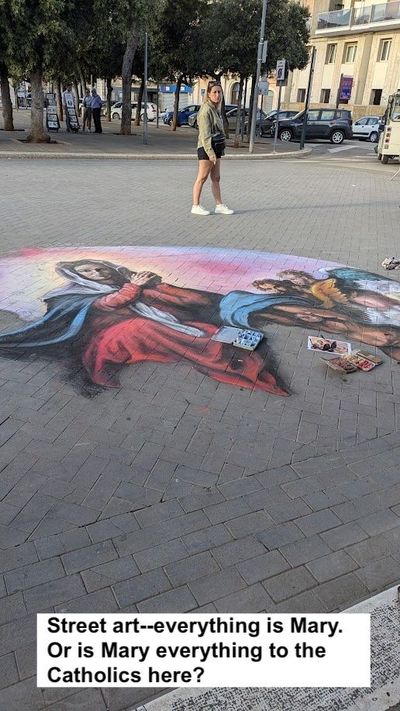38 Blog Saturday, October 12, 2024 “A Tale of Many Churches”
Today turned out to be alllllll about church. But in the most unique ways you can imagine. Even I am sort of shocked by the variety of ways that church organically fit into this day in Monopoli, Italy.
First church: we made a visit to the local Cathedral of the Most Holy Mary of Madia (Basilica Concattedrale di Maria Santissima della Madia or Holy Mary of the Raft—I’m not kidding.) in the heart of Monopoli near the sea (you can start to think about why she’s Mary of the Raft if you realize the church is close to the water). There’s a beautiful piazza in front of the church, and we walked in and were just stunned by the beauty of the marblework, by the size of the nave, by the ornate nature of the interior, and by a second story altar above the main altar dedicated to the Virgin Mary. Originally founded in the 12th century, the Cathedral was substantially rebuilt in the late 1700’s and is one of the finest examples of Baroque architecture in the region.
Ok, I’ll tell you! She’s called Mary of the Raft because, while building the first Cathedral in 1117, there was a shortage of beams needed to complete the project. Mary appeared to a simple man named Mercurio three times to tell him the beams were at the port. Mercurio ran to tell the Bishop, and three times the Bishop turned him away. The final time, Mercurio went down to the port himself and saw the beams floating at the dock, formed into a raft. On the raft was an icon of the Virgin Mary holding the child Jesus, and that icon is displayed in the Cathedral to this day. A great festival and procession is held throughout Monopoli, which includes the icon annually on December 16th.
While we were at the Cathedral walking around and amazed by the quality of the work, we noticed people getting set up for a wedding and we decided to leave so we wouldn’t get in the way. Imagine having a wedding in such a grand setting!
Second church: The Chiesa Sant’Angelo, or Saint Angel’s Church was deconsecrated, so it can no longer hold services, but the church was the site one of 34 exhibits on the PhEST International Photography Festival throughout Monopoli. Alistair and I bought tickets and are slowly trying to see as many of the exhibits as possible. What we saw at Chiesa Sant’Angelo was a mix of carnival and church. The artist had positioned large installments of patronal lights—colored lights used to illuminate the town on the feast day of the patron which is Dec 16. The enormous light fixtures gave a strange of something being off balance in the otherwise empty church, and of something being too colorful and too bright inside a church, but I really liked it.
Third church: We were going to visit the Church of Purgatory (more on that later) which is very close to the Basilica we had toured that morning. While passing by, we could see the very elaborate wedding had just ended, and the piazza was filled with people like me and Alistair—curious tourists who wanted to see the bride and groom emerge from the doors of the Cathedral. This was what communities used to do. When someone got married at the local church, everyone would turn out to welcome the new couple. The outfits! The shoes! The flowers that both lined the pathway up to the church, and that decorated many of the dresses and outfits. About 200 people spilled out of the church and we all waited to see the couple. We were not disappointed! After snapping some photos, we only had to walk around the corner to find the next church.
Fourth church: Church of Santa Maria del Suffragio (known as the Purgatory). Are you seeing a theme here? Mary is truly the ‘Queen’ of this region. We got to the church a little before 6 only to find that the church closed to the public during service time—which was at 6 pm, of course. So Alistair suggested that we attend the service, thus meeting the weekly responsibility to have Sunday worship. As it turned out, that was the only way we could see the church, plus we needed to attend church! Two birds, one stone!
What a strange experience. Skeletons and genuine mummies ‘decorate’ the church, and the basic theme is ‘turn or burn’ While the church was specifically founded to intercede, or pray for the souls of those who were thought to be in purgatory, or limbo, it has a pall of death and strangeness about it. The service was all in Italian, but we did a pretty good job following along. Afterward, we spent an additional few minutes looking at the church furnishings and devotional spaces. Among the devotional spaces—a room with 8 mummified humans, all dressed identically and looking like some kind of pirate story gone bad. Those who were ‘preserved’ include authorities from the old City and those important to the church. One infant was also among those who had been mummified, and the tiny body is in a display case as well.
First of all, purgatory is no longer considered a valid understanding of Paradise, but the Church of Purgatory was built during a time when the belief in purgatory was foundational doctrine in the Catholic Church. I remember being raised with these ideas myself. But this type of display is meant to bring home the reality of death, to force the viewer to accept mortality and to make the choice about they wanted their eternal days to be spent. It was macabre and it felt strange to celebrate the Eucharist (I did not receive) in the presence of all these, well, dead people.
I like to think of church as regenerative, as being light in a dark world, as leading with joy. While historically interesting, I could not engage with any spiritual benefit from viewing the skulls, skeletons and mummies in the church. I’ve never been a fan of scaring people into heaven, but I know that’s how some people become believers.
Fifth Church: After dinner tonight, we managed to catch a few more exhibits associated with PhEST, another that was held in a second deconsecrated church, the Church of Peter and Paul Apostles and Martyrs (Chiesetta rettoria SS. Apostoli Pietro e Paolo Martiri). The setting was grand and the exhibit fit well in the context of the church. We saw a collaborative series of photographs/drawings placed around the former sanctuary, including one set against the backdrop of an enormous swathe of red silk that fell from ceiling to floor, pooling at the bottom. It was an effective and dramatic setting for the photographs.
So let me cut to the chase—what is church? What is good about church, including the buildings, and what causes opacity or difficulty for those seeking the presence of God? Are there bad churches, or just bad ideas (that Purgatory Church really bothered me). How about using churches as icons and backdrops for exhibits even when the subject matter is offensive, which was not the case today, but it begs the question. These were also deconsecrated churches, so do we need to be concerned about their usage of not? Does a church still feel like a church even when it has been desanctified? Does God really leave the building? If not, how can we experience God in those spaces in an ongoing way?
I loved having all these disparate experiences of these places of worship and really enjoyed seeing this theme emerge today as we traveled around. We didn’t set out deciding to see so many churches. Churches seemed to cross our paths as we made our plans. I even saw an incredible chalk artist doing a drawing of the Virgin Mary for a street fair. What part of that might equal church for someone?
I admit that I am pretty happy that we attended church tonight because that means we have tomorrow morning free, and it is a rare for us to have that luxury. And yet the church bells will all ring beginning at 7 am, so we will not escape the knowledge of so many others flocking to churches in order to worship on our Sabbath day.
As you approach the Sabbath, what does church mean to you? What is important about church that nourishes your faith and your hope.
Blessings,
ML+
(oh my goodness....it's midnight and karaoke just started up down the street again! Might as well be in the apartment with us...) 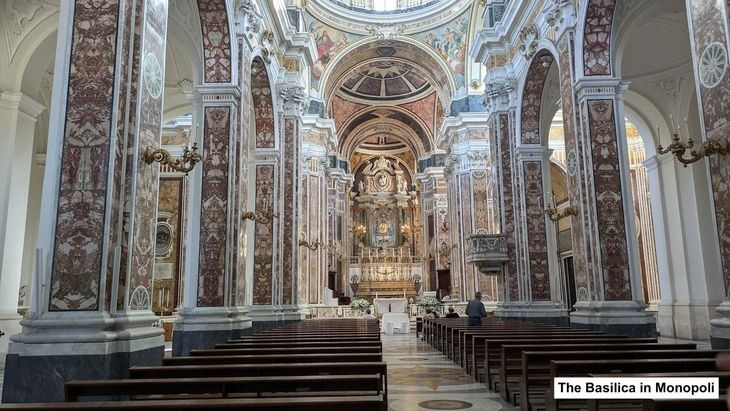
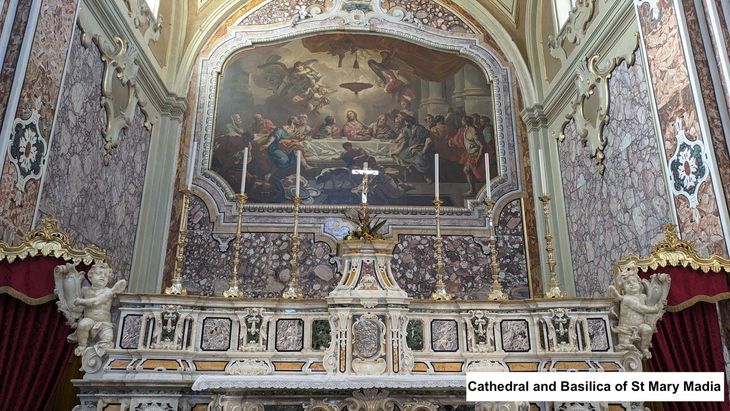
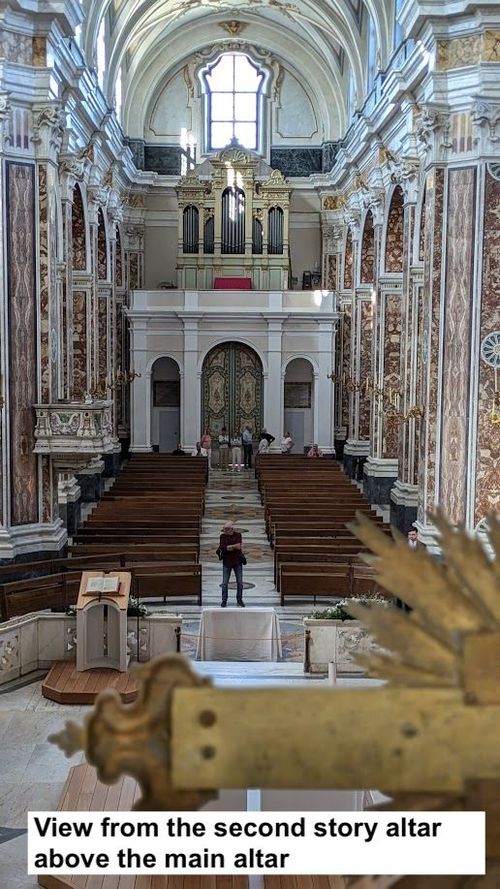
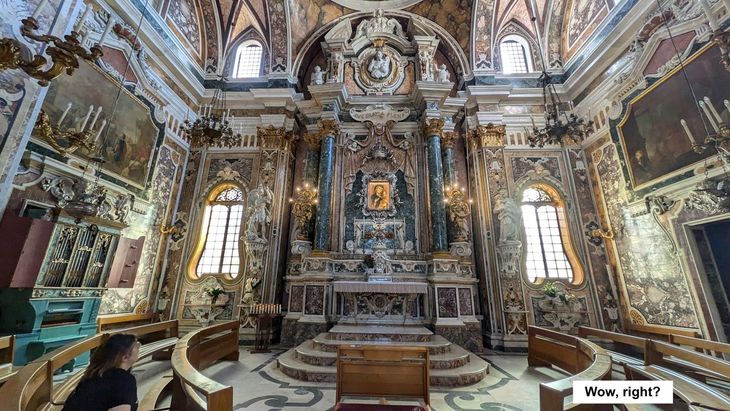
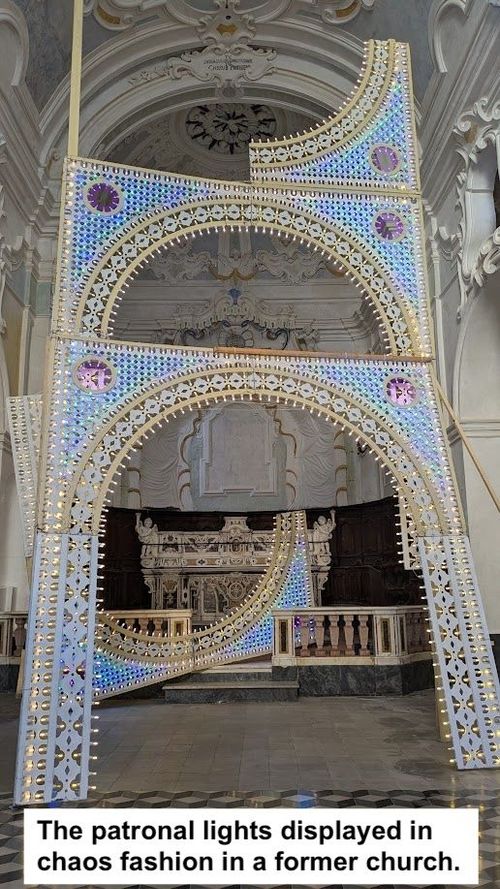
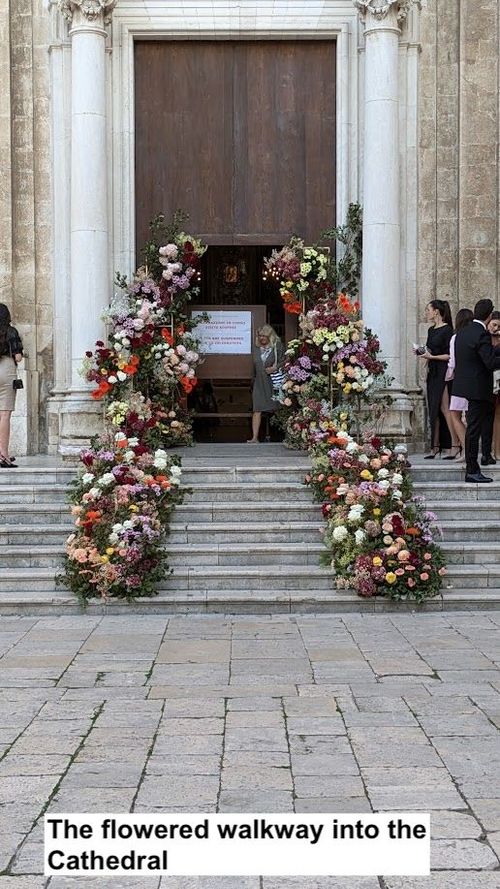
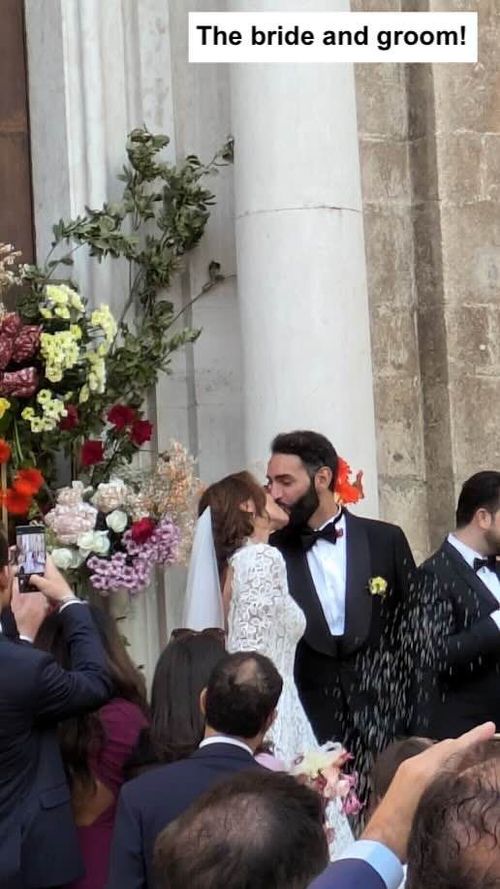
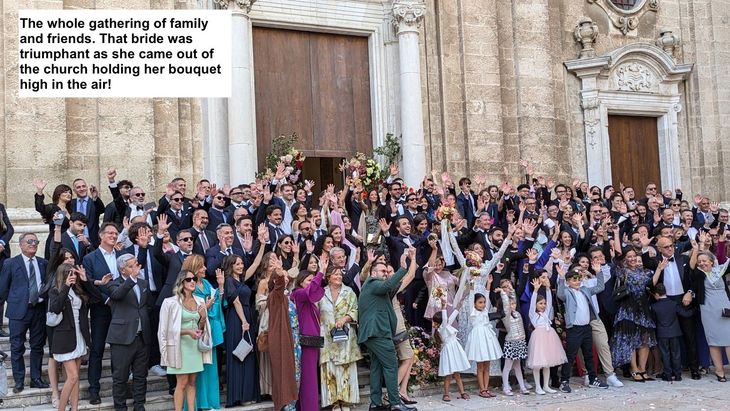
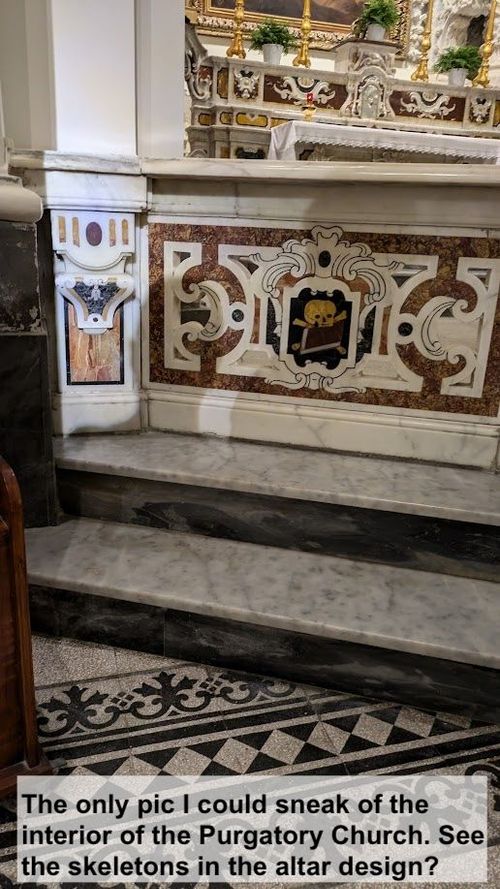
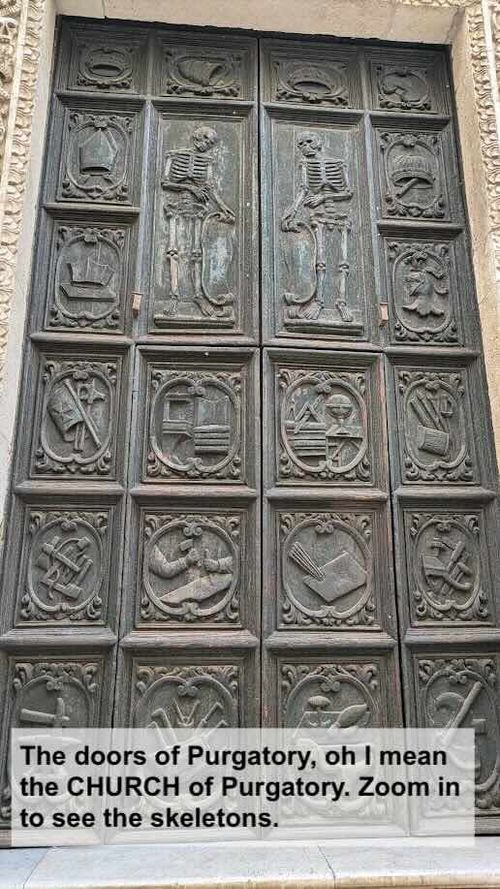
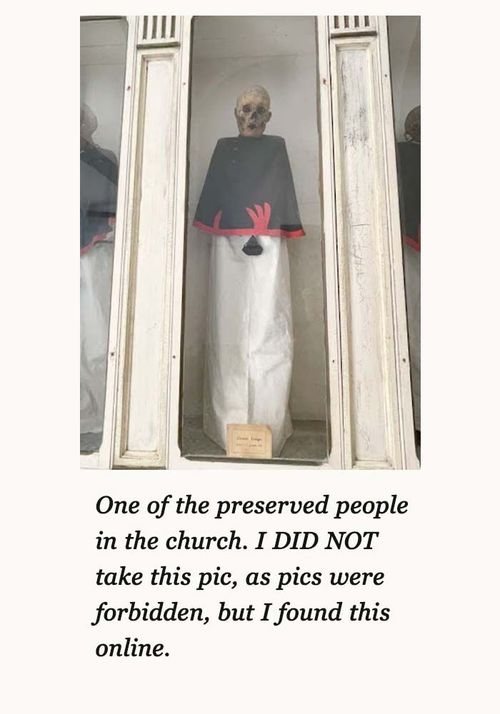
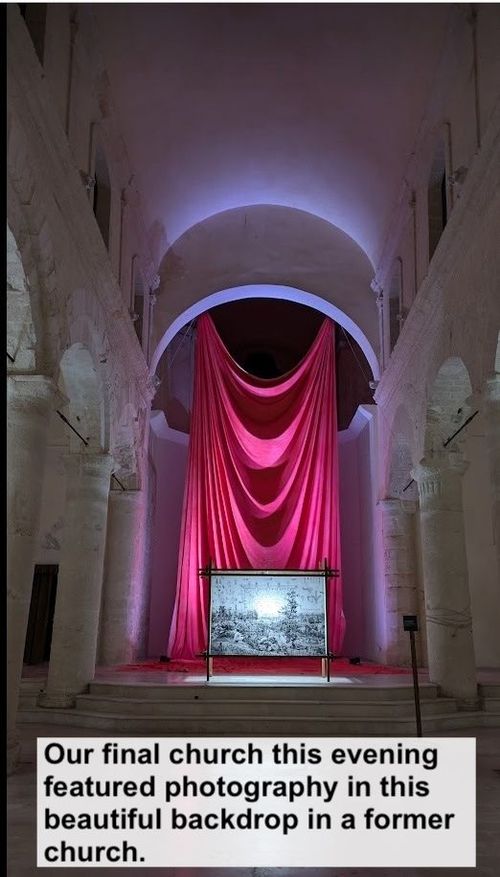
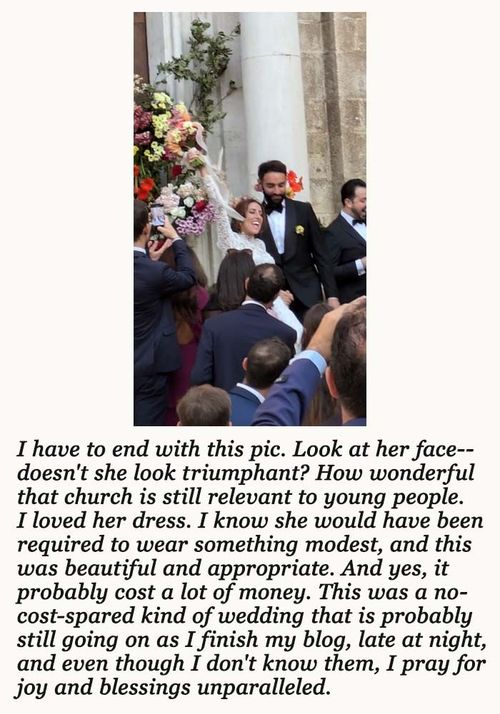
Blog Post 38
October 12, 2024, 12:00 PM
Post a Comment

